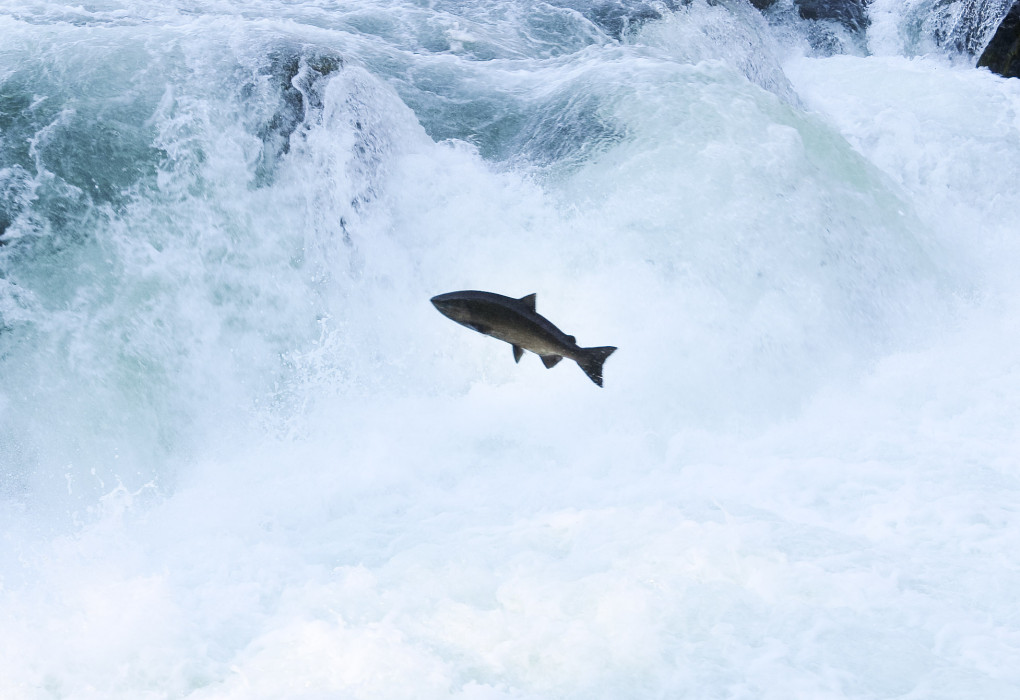River Advocates Warn of Another Possible Fish Kill Triggered by Winchester Dam Repairs
Over a week ago, Winchester Water Control District started repairs on their privately owned dam. A dam that is delaying and harming fish for the sole purpose of private recreation. It’s been disastrous, to say the least. Below is the most recent update on the dam concerning high temperatures and fish trapped below the dam provided by our colleague Jim McCarthy at WaterWatch of Oregon. If you are interested in learning more about what is going on check out our previous two blog posts here.
FOR IMMEDIATE RELEASE
FOR MORE INFORMATION, PLEASE CONTACT:
Jim McCarthy, WaterWatch of Oregon, 541-941-9450, jim@waterwatch.org
Kirk Blaine, Native Fish Society, 307-299-7834, kirk@nativefishsociety.org
River Advocates Warn of Another Possible Fish Kill Triggered by Winchester Dam Repairs
Some of North Umpqua’s Last Few Summer Steelhead Face Lethal Combination of Closed Access to Upstream Coldwater Habitat, Low Flows, and Record Heat
River advocates are preparing to document another fish kill if it materializes and will be available to reporters for comment and to provide photos and video.
Winchester, OR – Just days after a sloppy, penny-pinching repair effort at Winchester Dam triggered a massive kill of the North Umpqua River’s Pacific lamprey, river advocates are warning that some of the last few summer steelhead and spring Chinook salmon left in the North Umpqua may become the next aquatic life to die, trapped in the warm water below the dam as a heat wave scorches the region.
On Monday, August 7th, the fish ladder at Winchester Dam near Roseburg closed until August 28th to allow reservoir drawdown and structural repairs at the 450-foot wide, 17-foot tall, 130-year-old wood, steel, and concrete structure maintained solely for the private recreational use of approximately 110 landowners surrounding the reservoir. The move also closed off access to migratory fish seeking 160 miles of high-quality coldwater salmon and steelhead habitat upstream. Soon after, the National Weather Service issued an Excessive Heat Warning for the region for August 14th through 17th, forecasting “Dangerously hot conditions with temperatures between 102 to 108 degrees expected. A few west side valleys will reach up to 111 degrees.”
The drawdown repair option was chosen by dam owners specifically for its cheapness compared with other common repair options, despite its known high impact on the North Umpqua’s aquatic life, habitat, and drinking water supplies. State and federal officials chose to approve the owners’ repair proposal, despite having the authority to require lower-impact repair methods, despite repeated formal pleas from river advocates to avoid the anticipated mass mortality of aquatic life by requiring a lower-impact repair alternative, and despite a well-documented history of mass mortality of aquatic life during previous dam repairs using the same drawdown method.
Earlier this year, Oregon Department of Fish and Wildlife (ODFW) officials declined to answer river advocates’ formal request to use their authority to require a less harmful repair alternative maintaining upstream fish migration ¬– only weeks before collapsing summer steelhead numbers spurred ODFW to shut all angling in the North Umpqua from August through November. The ignored petition (linked below) stated in part: “The North Umpqua in August typically experiences low flows and high temperatures, which cause significant stress and mortality among native fish, as well as angling closures in recent years. In addition, the river reach below Winchester Dam is generally lacking in cold water refugia, so fish stranded below the dam by the project’s interruption period will be even more likely to be highly stressed or die before they can reach the protection of cold water. Migratory fish crowded into refugia downstream by this passage interruption may be more susceptible to predation, poaching, and the spread of disease. The drawdown of the reservoir before repair may draw additional fish towards the dam by temporarily increasing river flows downstream, then strand these fish for three weeks in low, hot water below an impassable dam. Any fish that survive being bottled up against the dam will then face even lower and hotter water when reservoir refill depletes downstream flows.”
Last week, officials from state, federal, and tribal wildlife agencies combed vast stretches of drying reservoir sediments above the dam in an emergency effort to stem losses from a massive lamprey kill sparked by the controversial dam repair effort. This week, the emergency teams have given way to flocks of birds gathered to feast on dead lamprey carpeting the reservoir flats. The death toll for the North Umpqua’s native aquatic life due to the repairs remains to be calculated, but it is expected to be staggering.
Winchester Dam is a derelict former hydropower facility and one of the state’s highest priorities for fish passage correction. According to the Oregon Department of Fish and Wildlife, the dam blocks or impedes access to 160 miles of high-quality habitat for native fish even when the fish ladder is in operation. River advocates from a coalition of fishing, conservation, and whitewater groups have been working for years to raise alarm bells with government officials over the Winchester Water Control District’s chronic non-compliance with state and federal repair permitting, engineering, water quality, and dam safety requirements as well as their disregard for protections for fish and wildlife despite the essential habitat importance of the North Umpqua for salmon and steelhead.
River Advocates Petition to ODFW:
https://waterwatch.org/wp-content/uploads/2023/02/Winchester_Dam_Passage_Petition_02_26_23.pdf
Public Records/Agency Notes from Past Winchester Dam repairs:
https://waterwatch.org/wp-content/uploads/2023/08/WInchester-Draw-Down-Note-Synthesis-Final.docx
https://waterwatch.org/wp-content/uploads/2023/08/WInchester-Draw-Down-Note-Synthesis-Final.docx
Winchester Dam Repair Permits
ODFW Fish Passage Authorization:
DEQ 401 permit:
https://waterwatch.org/wp-content/uploads/2023/08/20230718_DEQ_401_WQC_2018_505_1.pdf
NOAA Biological Opinion:
https://waterwatch.org/wp-content/uploads/2023/08/2023_07-20_WinchesterDam_WCRO-2022-02717.pdf
Army Corps permit:
https://waterwatch.org/wp-content/uploads/2023/08/20230726-NWP-Verification-Ltr-NWP-2018-505-1.pdf
Revised WWCD removal-fill application (last one before Corps and DEQ issued permits):
